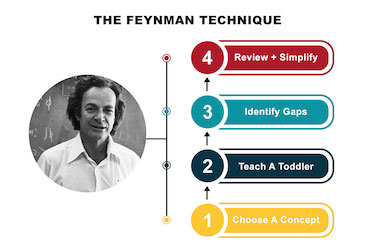Effective learning with ChatGPT can transform how we approach education. By integrating ChatGPT into our study routines, we can enhance our understanding and retention of new concepts. This powerful AI tool supports learners in setting clear objectives and offers personalised guidance to meet individual needs.

As we explore this approach, we discover practical strategies for using ChatGPT effectively. From crafting targeted prompts to designing engaging assignments, we can maximise our learning experience. We can also assess our progress and build greater confidence in our abilities with the right techniques.
By embracing ChatGPT, we step into a new era of learning. This technology empowers us to interact with information in ways that align with our personal goals, making the educational journey more enjoyable and effective.
Key Takeaways
- ChatGPT helps us set clear learning objectives.
- Effective prompts enhance our study experience.
- We can evaluate our progress and gain confidence in our skills.
Understanding ChatGPT as a Learning Tool

ChatGPT offers a unique blend of features that can enhance our learning experience. By leveraging its capabilities, we can enrich students' knowledge and engagement. The following sections discuss the specific advantages of using ChatGPT in education and how it stands apart from traditional learning resources.
ChatGPT's Capabilities in Educational Contexts
ChatGPT can interact with students in real-time, providing immediate feedback and answers. This allows learners to explore topics at their own pace, which is vital for comprehension.
We can use ChatGPT to generate explanations, summaries, and even quizzes tailored to specific subjects. For example, if a student is struggling with mathematics, ChatGPT can break down complex concepts into simpler terms.
Moreover, it supports personalised learning by adapting to the student’s level of understanding. ChatGPT can also assist in brainstorming ideas for projects or essays, guiding students in structuring their thoughts and arguments.
With its ability to access a vast pool of information, ChatGPT becomes an invaluable learning partner in our educational journeys.
Differences Between ChatGPT and Traditional Learning Resources
While traditional learning resources often provide static content, ChatGPT is dynamic and interactive. Textbooks and lectures typically deliver fixed information, but ChatGPT can offer tailored responses based on students' questions.
In addition, ChatGPT engages students in conversations, making learning more enjoyable. This interactive nature can motivate students to seek out information rather than passively receive it.
Unlike traditional resources that may not update frequently, ChatGPT can access and summarise the latest information across various topics. This ensures that students are learning from the most current knowledge available.
Together, these differences highlight how ChatGPT can effectively complement and enhance our learning alongside traditional methods.
Setting Learning Objectives with ChatGPT

When we set learning objectives using ChatGPT, we focus on clarity and relevance. Clear objectives guide our educational plans and help students understand what they need to achieve. Using precise prompts in ChatGPT, we can efficiently define and customise these objectives.
Defining Clear Learning Goals
To create effective learning objectives, we need to define what we want our learners to achieve. Clear goals should be specific, measurable, achievable, relevant, and time-bound (SMART). For example, instead of saying “understand multiplication,” we can specify “solve 10 multiplication problems with 80% accuracy in one hour.”
ChatGPT can assist us in formulating these goals. We can input our subject area and desired outcomes, and it will help generate precise objectives. By collaborating with ChatGPT, we ensure our goals align with curriculum standards and address learner needs effectively.
Customising ChatGPT Prompts to Target Objectives
Customising prompts is crucial for fine-tuning ChatGPT’s responses. We can start with a basic prompt such as, “Create learning objectives for a Grade 5 mathematics class.” From there, we can add details about specific topics, desired difficulty levels, or assessment methods.
For instance, we might specify, “Generate objectives for a lesson on fractions aimed at visual learners.” This helps ChatGPT tailor its output to meet our specific needs.
Utilising prompt engineering allows us to get the best results from ChatGPT, ensuring our objectives are relevant and impactful. By iterating on prompts, we can enhance the quality of our objectives and better support our learners.
Incorporating ChatGPT into Study Routines

Incorporating ChatGPT into our study routines can significantly enhance our learning experience. By using this tool thoughtfully, we can make revision more engaging and supplement our understanding of textbook material effectively.
Integrating with Revision Sessions
We can use ChatGPT to transform our revision sessions. For instance, we can ask it to create quizzes based on our study topics. This interactive approach helps us identify areas where we need to focus more.
Furthermore, we can invite ChatGPT to summarise complex concepts into simpler terms. This makes challenging subjects more accessible. It can also generate practice questions to help us prepare for exams, ensuring we cover key points.
Supplementing Textbook Knowledge
ChatGPT can be a valuable resource for expanding our understanding of textbook content. When we encounter difficult topics, we can ask it for explanations that may provide a different perspective.
By doing this, we enhance our grasp of the subject. We could also use it to explore related topics and themes, enabling us to make connections between ideas.
Additionally, we can employ ChatGPT to generate detailed outlines for essays or projects, which can streamline our writing process. With its help, we can produce well-structured and comprehensive work, aligning closely with our educational goals.
Strategies for Efficient Prompt Engineering

To achieve the best results with ChatGPT, we must focus on how we craft our prompts. Effective prompt engineering allows us to guide the model's responses, making it easier to obtain the information we seek.
Formulating Effective Prompts
When we formulate prompts, clarity is vital. We should use simple, direct language to avoid misunderstandings. A well-structured prompt might look like this: “Explain how photosynthesis works in plants.” This gives ChatGPT a clear task.
Including examples within our prompts can also help tailor responses. For instance, we might ask, “Provide three benefits of exercise, like improved mood and better sleep.” This specificity helps the model understand the desired format and content.
It’s beneficial to break down complex requests into smaller tasks. Instead of asking, “Tell me about climate change,” we could ask, “What are the causes of climate change?” followed by, “What are its effects?” This step-by-step approach enhances clarity and detail.
Eliciting Detailed Explanations
To get detailed explanations, we should encourage deeper insights in our prompts. Phrasing like, “Explain the significance of photosynthesis in detail,” invites richer responses.
We can also specify the type of information we want. For example, “List and explain the main stages of photosynthesis.” This approach not only clarifies our expectations but also helps ChatGPT focus on key elements.
Asking follow-up questions can deepen the discussion. For instance, after receiving an explanation, we might ask, “Can you provide examples of plants that rely heavily on photosynthesis?” This keeps the conversation dynamic and informative.
By following these strategies, we can optimise our interactions with ChatGPT and gain more value from its capabilities.
Evaluating Learning Progress with ChatGPT
Using ChatGPT for evaluation allows us to create tailored assessments that reflect student understanding. We can also gain insights into their learning journey through effective feedback mechanisms.
Designing Assessments Using ChatGPT
We can leverage ChatGPT to design a variety of assessments. This tool enables us to create quizzes, essays, and discussion prompts that align with learning objectives. We can customise questions to address specific topics and difficulty levels, ensuring they are tailored for our students’ needs.
For example, we can ask ChatGPT to generate multiple-choice questions on a specific subject. This helps us assess knowledge retention effectively. Furthermore, using scenario-based questions allows students to apply their knowledge in practical situations.
Additionally, assessments can be adaptive. By evaluating initial student responses, we can adjust the complexity of subsequent questions. This technique promotes a growth mindset, encouraging learners to tackle challenges at their own pace.
Feedback Mechanisms and Improvement Tracking
Feedback is crucial in tracking student improvement. ChatGPT can assist us in providing timely and constructive feedback on student submissions. By analysing written work, it can highlight strengths and areas needing attention.
We can also use ChatGPT for summarising key points from students' work. This allows us to give focused advice on how they can enhance their skills. For example, if a student excels at argument structure but struggles with grammar, we can direct them to resources for improvement.
To monitor progress, we can implement regular check-ins using ChatGPT. By setting learning milestones, we can encourage students to reflect on their journey. This ongoing evaluation helps us adjust our teaching strategies in real-time, ensuring every student receives the support they need.
Fostering Confidence and Competence in Learners
We can play an essential role in building confidence and competence in our learners. Using ChatGPT as a supportive tool allows us to create an engaging environment that encourages self-reflection and independence while helping students overcome challenges.
Encouraging Self-Reflection and Independence
ChatGPT prompts learners to think critically about their work. By asking open-ended questions, it encourages students to explore their thoughts and ideas more deeply. This process of self-reflection enhances understanding and promotes independence.
For example, students can ask ChatGPT for feedback on their writing. Instead of providing direct answers, ChatGPT can suggest areas for improvement. This approach allows learners to take ownership of their progress.
Furthermore, engaging with ChatGPT fosters a sense of autonomy. Students learn to rely on their reasoning skills while benefiting from the AI’s insights. This balance builds both confidence and competence in their abilities.
Overcoming Challenges with ChatGPT's Guidance
When learners face difficulties, ChatGPT provides timely support. Instead of feeling frustrated, students can turn to this tool for assistance. ChatGPT can break down complex concepts into simpler terms, making learning more accessible.
For instance, if a student struggles with a maths problem, they can ask ChatGPT for clarification. The AI can guide them step-by-step through the solution process. This guidance transforms challenges into opportunities for growth.
Additionally, using ChatGPT regularly helps normalise asking for help. As students learn to reach out for assistance, they build resilience and confidence in tackling future obstacles. This dynamic encourages a growth mindset, essential for ongoing learning.
Designing Effective Assignments with ChatGPT
When we design assignments using ChatGPT, we can enhance student engagement and understanding. It's essential to align these tasks with our learning objectives.
1. Clear Objectives
Each assignment should have specific goals. We need to define what we want our students to learn. For example, if we aim for critical thinking, our prompts should encourage analysis and evaluation.
2. Varied Formats
We can use different types of assignments to cater to diverse learning styles. Here are some ideas:
- Scenario-based problem-solving: Students apply concepts to real-world situations.
- Role-playing dialogues: Encourage interaction and creativity.
- Creative writing prompts: Inspire imagination and personal expression.
3. Chunking Tasks
Breaking down assignments into smaller parts helps students manage their workload. By doing this, we allow them to focus on one step at a time, making the process less overwhelming.
4. Encourage Exploration
Using ChatGPT, students can explore topics more deeply. We can prompt them to ask questions or generate ideas. This builds their research skills and fosters curiosity.
5. Feedback Loop
Incorporate opportunities for students to receive feedback. We can ask them to share their work, then use ChatGPT to suggest improvements. This method reinforces learning and promotes continuous development.
By integrating these strategies, we can create assignments that are not only effective but also enjoyable for our students.
Frequently Asked Questions
In this section, we address common inquiries about how to effectively use ChatGPT for academic learning. These questions cover its applications, impacts on education, best practices, available resources, and examples of successful usage.
How can ChatGPT be utilised to improve academic learning?
We can use ChatGPT to clarify concepts, generate study questions, and summarise complex texts. It acts as a virtual tutor that provides instant feedback on assignments and helps with writing and research tasks.
In what ways does ChatGPT influence educational outcomes?
ChatGPT can improve engagement and motivation by providing personalised learning experiences. Its ability to adapt to individual learning styles can lead to better understanding and retention of material.
What are the best practices for incorporating ChatGPT into one's study regime?
To maximise our use of ChatGPT, we should set clear learning goals, ask specific questions, and engage in interactive dialogues. Regularly reviewing outputs and seeking clarification on misunderstandings can enhance our learning process.
Are there any guides or PDF resources available to learn how to use ChatGPT effectively?
Yes, resources such as the guide on Teaching with AI provide valuable insights on using ChatGPT effectively in educational settings. These guides often include practical tips and suggested prompts.
What are some examples where ChatGPT has been used effectively for educational purposes?
We have seen ChatGPT used in various ways, such as assisting students in drafting essays, creating study aids, and facilitating language practice. Many educators have reported positive outcomes when integrating ChatGPT into their teaching methods.
Can ChatGPT be an effective tool for both teachers and students, and if so, how?
Yes, ChatGPT serves as a support tool for teachers by helping with lesson plans and resource creation. For students, it offers assistance with research, writing, and understanding difficult subjects, making it a versatile tool in education.





















